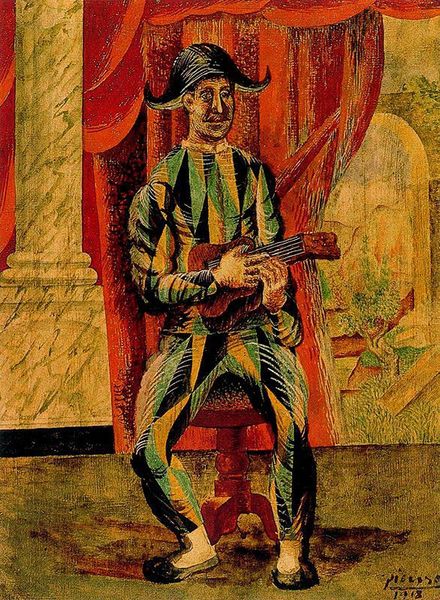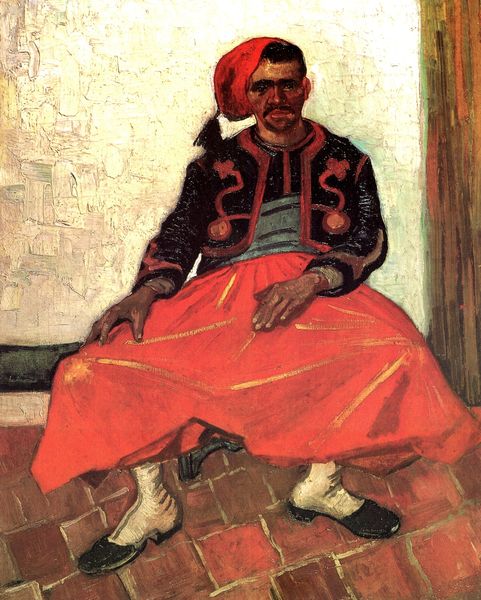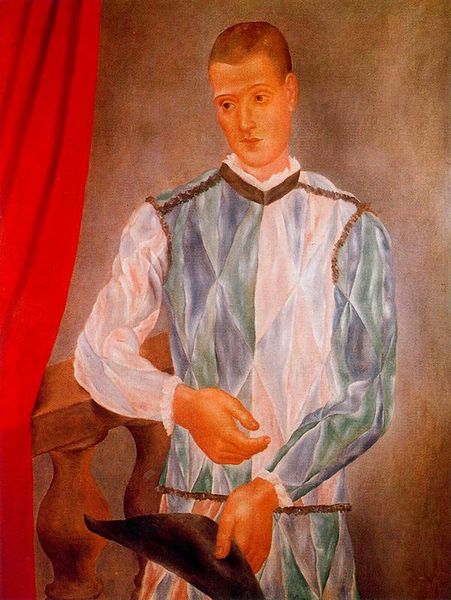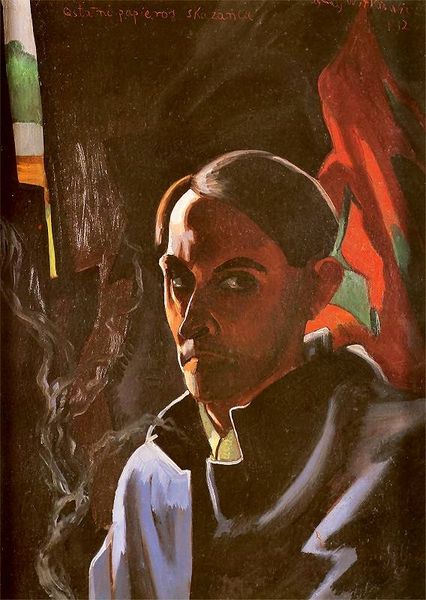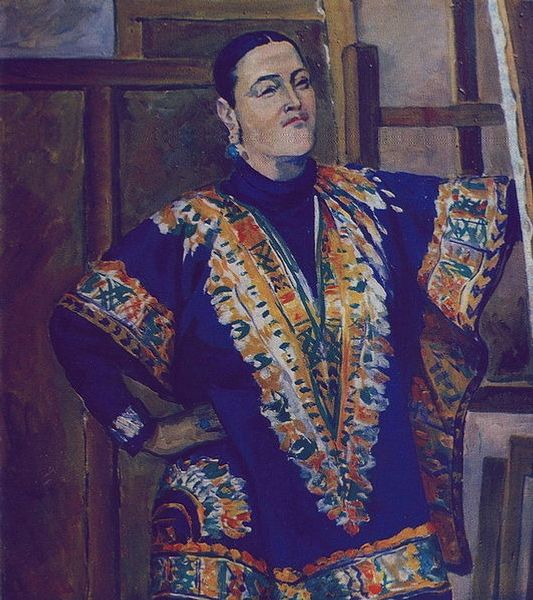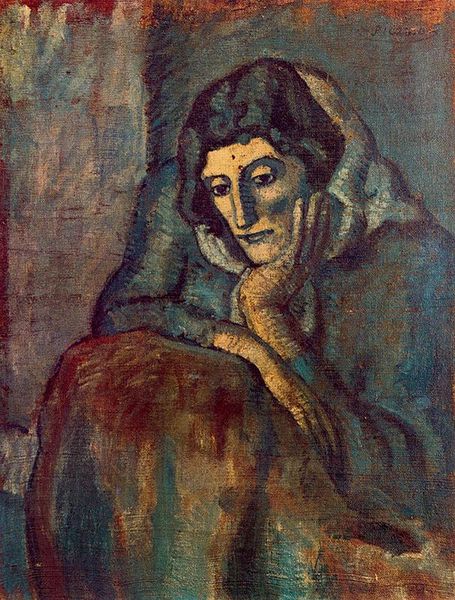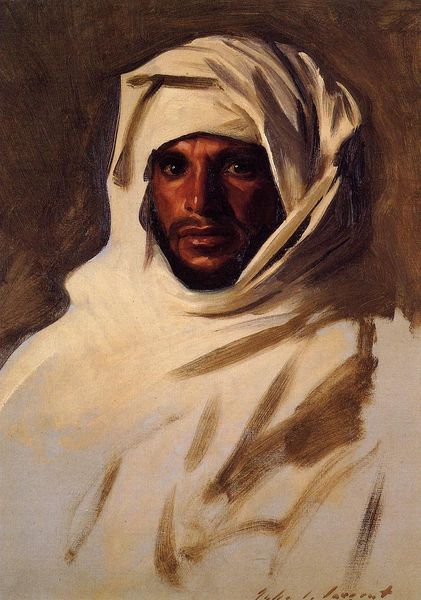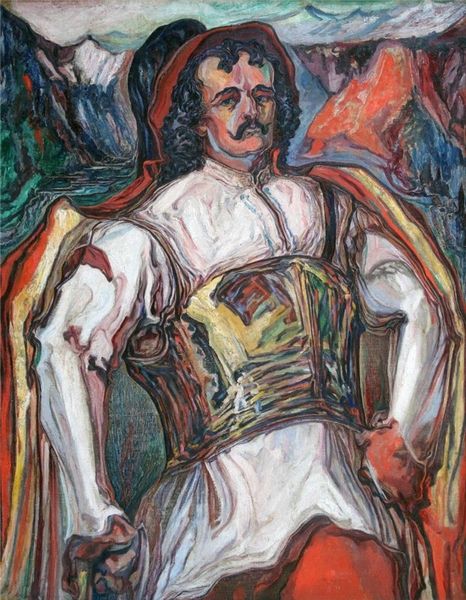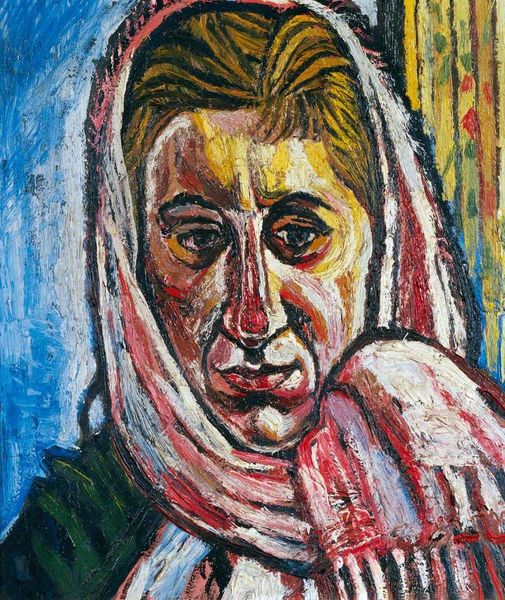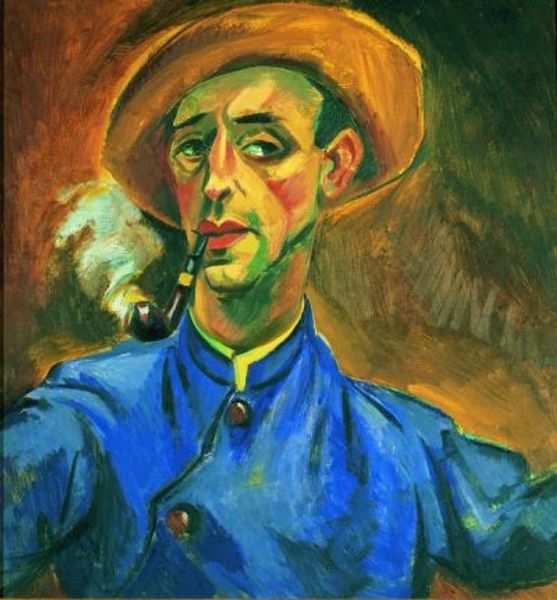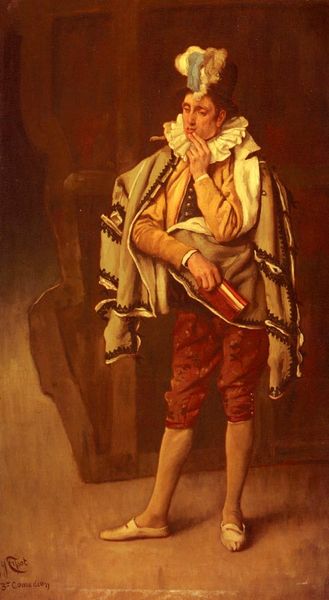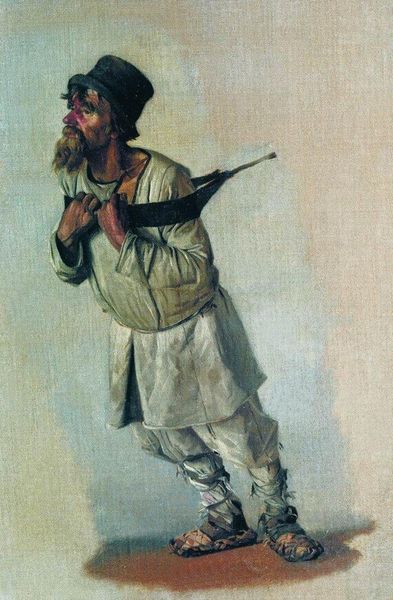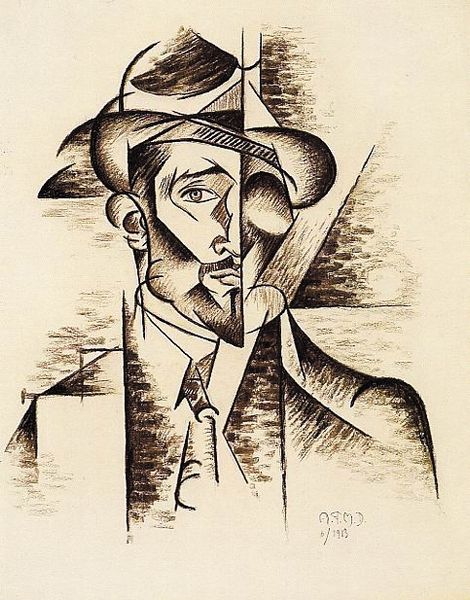
oil-paint
#
portrait
#
cubism
#
oil-paint
#
oil painting
#
expressionism
#
expressionist
Copyright: Public domain US
Editor: This is Pablo Picasso's "Pierrot with a mask," painted in 1918. The medium appears to be oil paint, and there is a distinct theatrical, somewhat melancholic feel to it. What strikes me is how the application of paint and texture almost seem to convey a sadness and resignation within the character. How do you interpret this work? Curator: This "Pierrot" is particularly fascinating when considered through the lens of material production. Notice the materiality of the paint itself— the brushstrokes, the impasto. It’s a direct link to Picasso’s labor. Also, think about the historical context: 1918, the end of World War I. The Pierrot figure, often associated with comedy and entertainment, is recast here, burdened. He seems to almost buckle under the weight of the garments and hat. This garment – it must have been constructed in a shop with human labor and materials acquired through social and economic circumstances of that era. What does this suggest to you? Editor: That even something meant to be light and frivolous, like a costume, has roots in a complex and sometimes dark reality? It’s not just an object; it represents a whole chain of human involvement and the resources expended to make it. It also makes me consider his own role: how much labor goes into being an artist and sustaining his production! Curator: Precisely. Consider too, that oil paint itself is a material, sourced, refined, and sold, becoming a commodity in the process. His masterful application of this medium then elevates it again. The transformation, from base material to an expressive artwork, exposes tensions inherent within capitalism. Art is no longer simply symbolic. It is a site of ongoing material transformation that involves tools, methods and laborers and is inevitably grounded in and marked by economic structures and social events. Editor: I’d never thought of it that way before, focusing on the materiality of the art itself and its journey as an item of work and how the economic influences create more dimension to the message in it. Curator: Indeed! Thinking materially allows us to read art as not only symbolic but inextricably linked to its own conditions of making and consumption, revealing how that reflects not only the man making it but the time surrounding it as well.
Comments
No comments
Be the first to comment and join the conversation on the ultimate creative platform.
